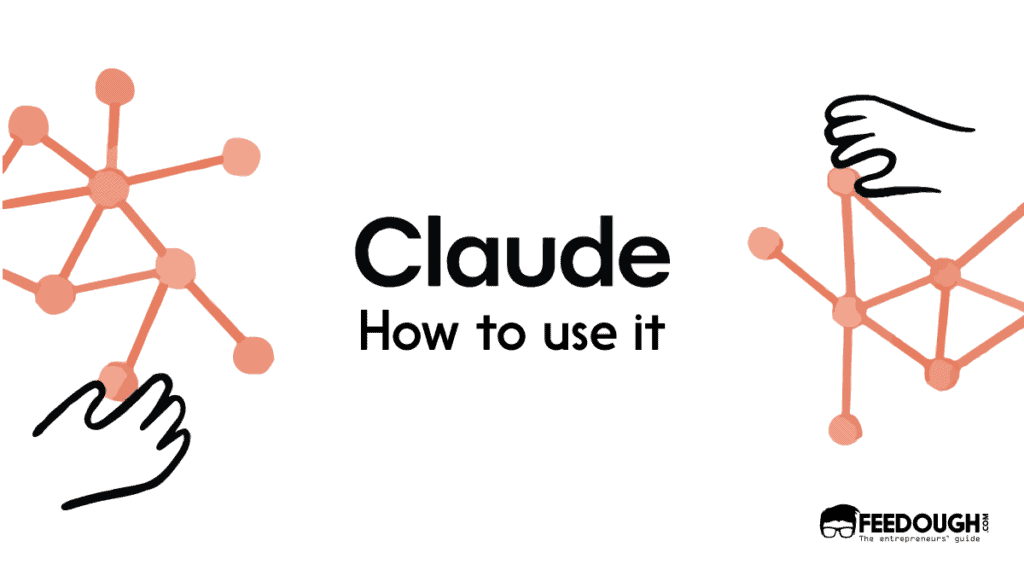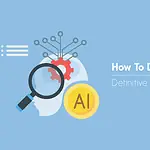ChatGPT isn’t the only tool out there for conversational AI anymore. It has solid competition from several LLM tools like Bard, HuggingChat, etc., but Claude is the most recent one to enter the arena. Developed by researchers at Anthropic, Claude AI is a ChatGPT alternative that can generate text conversation responses based on natural language input.
But how does Claude work? Or, better, how to use Claude AI to get the most out of it? In this guide, let’s break down everything you should know about Claude AI and Claude 2.
What Is Claude AI?
Claude is an AI chatbot designed and launched by Anthropic, a company that aims to create safe and beneficial artificial intelligence. This chatbot is really good at understanding and processing text. It can understand, process, and respond to natural language inputs with high reliability, making it a potent tool for various applications.
It works just like ChatGPT – in a conversational mode, Claude analyses user input and produces a contextually relevant response. It’s designed to be flexible enough to generate text responses with human-like intuition, leading to more engaging conversations and interactions.
Released in March 2023, this ChatGPT alternative is aimed to provide “helpful, harmless and honest” answers to queries, separating it from its competitors like Google Bard and ChatGPT.
How Does Claude Work?
Unlike other ChatGPT alternatives like Chatsonic, Jasper Chat, etc., that rely on the ChatGPT technology itself, Claude uses a unique combination of proprietary natural language processing (NLP) and deep learning-based algorithms to generate its conversational responses.
To understand how Claude works, you need to understand these three technical terms –
- LLM – Claude is a language-agnostic LLM tool. It can understand natural language inputs and generate responses in multiple languages, including English, French, German, and Spanish. For example, asking Claude a question in English will generate an appropriate response in English.
- NLP – Natural language processing (or NLP) is what allows Claude to recognise patterns and identify the intent behind user input. Through this technology, it can understand user queries with greater accuracy and provide more meaningful conversational responses.
- Deep Learning – The deep learning algorithms used by Claude are trained to recognise the context, sentiment, and emotion of a conversation. By understanding this context, it can generate natural-sounding responses that make for more engaging conversations and interactions with users.
Claude has received extensive training on vast amounts of real-time data available on the internet (till December 2022), allowing it to learn the patterns and nuances of human language. When a user interacts with Claude AI, the system processes the input and generates relevant responses based on the learned patterns.
Claude strictly follows a set of principles termed ‘Constitutional AI (CAI)’ that dictates its behaviour, making it a safe, helpful, and reliable AI chatbot. The AI keeps on improving its response quality and overall functioning with the help of user feedback and repetitive refinements.
Features Of Claude AI
Claude AI boasts several features that make it a powerful AI chatbot. Some of its key features are listed below:
- Large language model: Claude 2 is a large language model, which means it has been trained on a massive dataset of text and code. This gives it the ability to generate text, translate languages, write different kinds of creative content, and answer your questions in an informative way.
- Extensive context window: Claude’s context window ranges to 100,000 tokens which is roughly 75,000 words. It means a person can feed entire books and lengthy documents into Claude within seconds and then ask the AI complex questions about them.
- Contextual responses: Claude 2 can understand the context of your conversation and respond accordingly. This means that it can keep track of what you have said previously and use that information to generate more relevant and helpful responses.
- Longer responses: Claude 2 can generate longer responses than previous language models. This makes it more capable of handling complex tasks like writing essays or summarising large documents.
- Ability to read multiple files: Claude 2 can read multiple files at once. This makes it possible to compare and contrast information from different sources, or to generate a summary of a large document.
- Improved coding skills: Claude 2 can generate code in a variety of programming languages, including Python, JavaScript, and SQL
- Multilingual capabilities: Claude 2 can converse in almost all languages on earth. It even has the capability to use a language to generate a new one.
- Focus on safety and ethics: Claude 2 has been designed with a focus on safety and ethics using the Constitutional AI. This means that it is less likely to generate harmful or offensive content.
- Available via API: Claude 2 is available via API, which means that it can be integrated into other applications. This makes it a powerful tool for developers and businesses.
How To Use Claude 2
Getting started with Claude is as easy as it gets. Just follow these few simple steps below:
- Visit the official website of Claude: https://claude.ai/

- Sign up and create an account to get access. Claude is currently in open beta mode, so access might be limited for some users.

- Browse through the products and services Claude offers and see what aligns with your needs and interests. Start a chat with Claude to get answers to your questions or create something with the helpful AI chatbot.
- Claude also offers API access to a limited number of users. You can check the eligibility criteria and apply for the API.
Using Claude
Claude works just like ChatGPT but with the added benefit of understanding more context and having up-to-date knowledge.

To use Claude, all you need is to understand the art of prompting. It’s as simple as talking to another human. But this artificial human is –
- Extremely intelligent and knows a lot more than you think. So you need to mention exactly what you are asking. You can’t just go and ask, “Tell me about rocket science”, as it’ll reply with answers that might be directed to a more educated person.
- Needs context to understand the situation and conversation. In simple terms, when you ask a question, make sure to provide some background information about the situation. It’ll help Claude understand your query better and give more accurate answers.
Though not connected to the internet directly, Claude is updated till December 2022 with the latest information and knowledge.
But the best part about Claude is that it can understand external files like PDFs and other text documents, extract knowledge from them, and provide answers based on that.
For example, you can upload a PDF containing information about marketing strategies and then ask Claude to summarise the document. It’ll give you an output that will be useful for your work.
Moreover, Claude can also generate code on demand. Whether you need a Python script or HTML coding, just ensure that your prompt contains the language you want and Claude will generate the code for your project.
How To Access Claude 2?
As amazing of a tool as Claude is, it is not available for use in many countries. However, if you reside in a country where Claude is not available and wish to access it, there is a workaround.
You can download and use a Windows VPN app or a Mac app which allows you to connect to servers of different countries. This will make it appear as though you are accessing Claude from one of its supported regions, and you can easily benefit from its capabilities. With the help of a good VPN and Mac app, you don’t have to miss out on anything!
You can also add your details to the country waitlist of Claude so you get informed immediately once it is officially available in your country.

Claude Vs ChatGPT
Both ChatGPT and Claude are impressive AI chatbots that offer their users a wide range of features and abilities. Let’s look at the differences that set these two chatbots apart to understand which one is better.
Feature | Claude | ChatGPT |
|---|---|---|
Accessibility | Claude is not accessible to everyone at the moment. | ChatGPT is accessible to everyone. |
Token limit | Claude accepts longer prompts at a time with up to 75,000 words which are equal to 100k tokens. | ChatGPT cannot handle longer prompts and has a token limit between 4k to 8k. |
Safety measures | Claude is designed to be a harmless and safe AI chatbot. It has a set of principles that ensures the content generated is safe and reliable. | As compared to Claude, ChatGPT does not have much stricter safety measures and it is easier to bypass the safety rules with ChatGPT. |
Access to information | Claude has been trained on a massive set of real-time data thus, it can provide the latest information available. | ChatGPT does not have any information after September 2021 which serves as its huge limitation. |
Better coding | Claude offers an overall better coding experience than ChatGPT as it can handle long prompts and refinements. | ChatGPT is comparatively one step behind Claude when it comes to coding and programming. |
Pricing | Claude is free, however, you can purchase more tokens once you run out of your existing tokens. | ChatGPT has both free and paid plans. For $20/month users can get access to ChatGPT Plus. |
A startup consultant, digital marketer, traveller, and philomath. Aashish has worked with over 20 startups and successfully helped them ideate, raise money, and succeed. When not working, he can be found hiking, camping, and stargazing.






![How Does ChatGPT Work? [Complete Guide] how does chatgpt work](https://www.feedough.com/wp-content/uploads/2024/02/how-does-chatgpt-work-150x150.webp)


